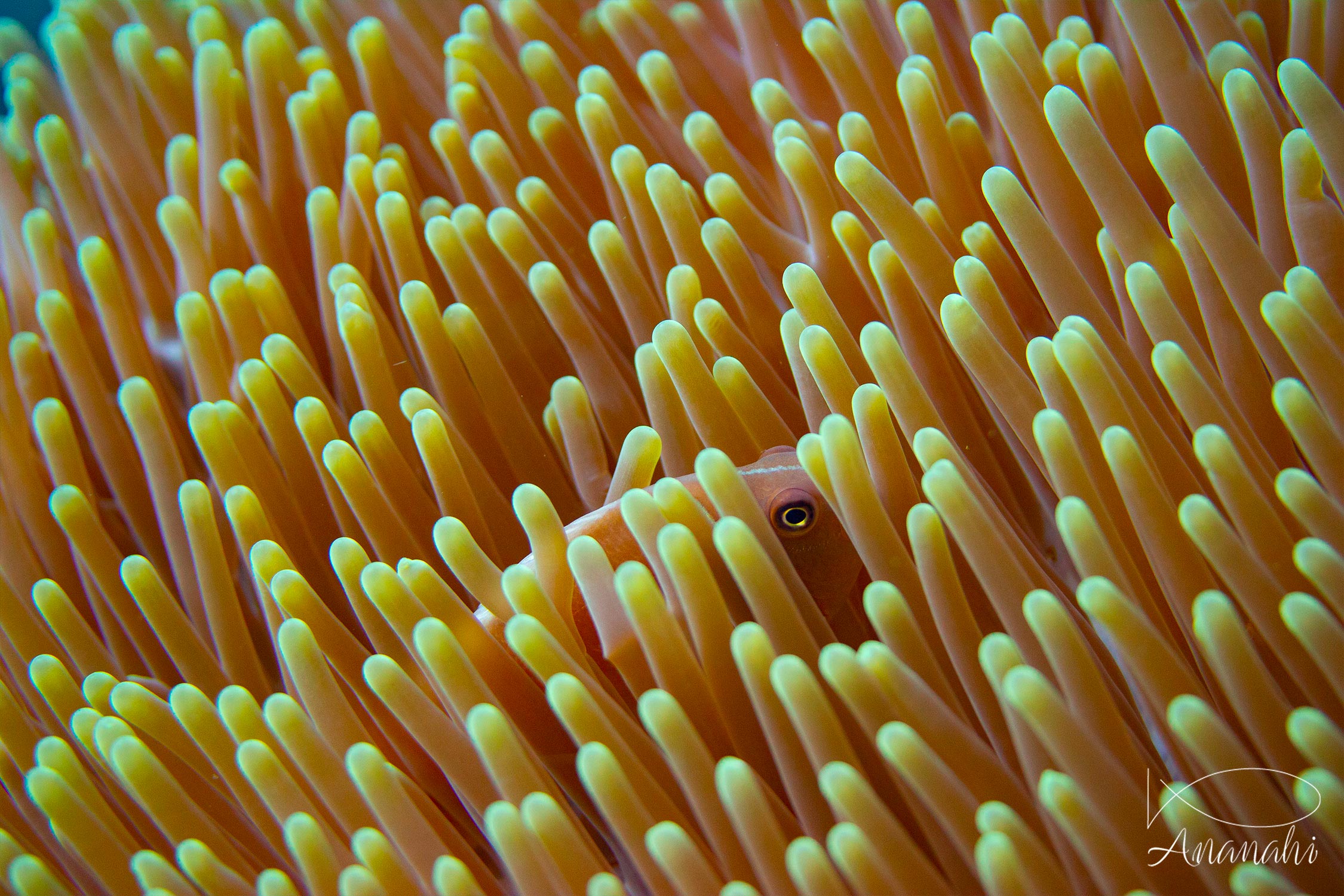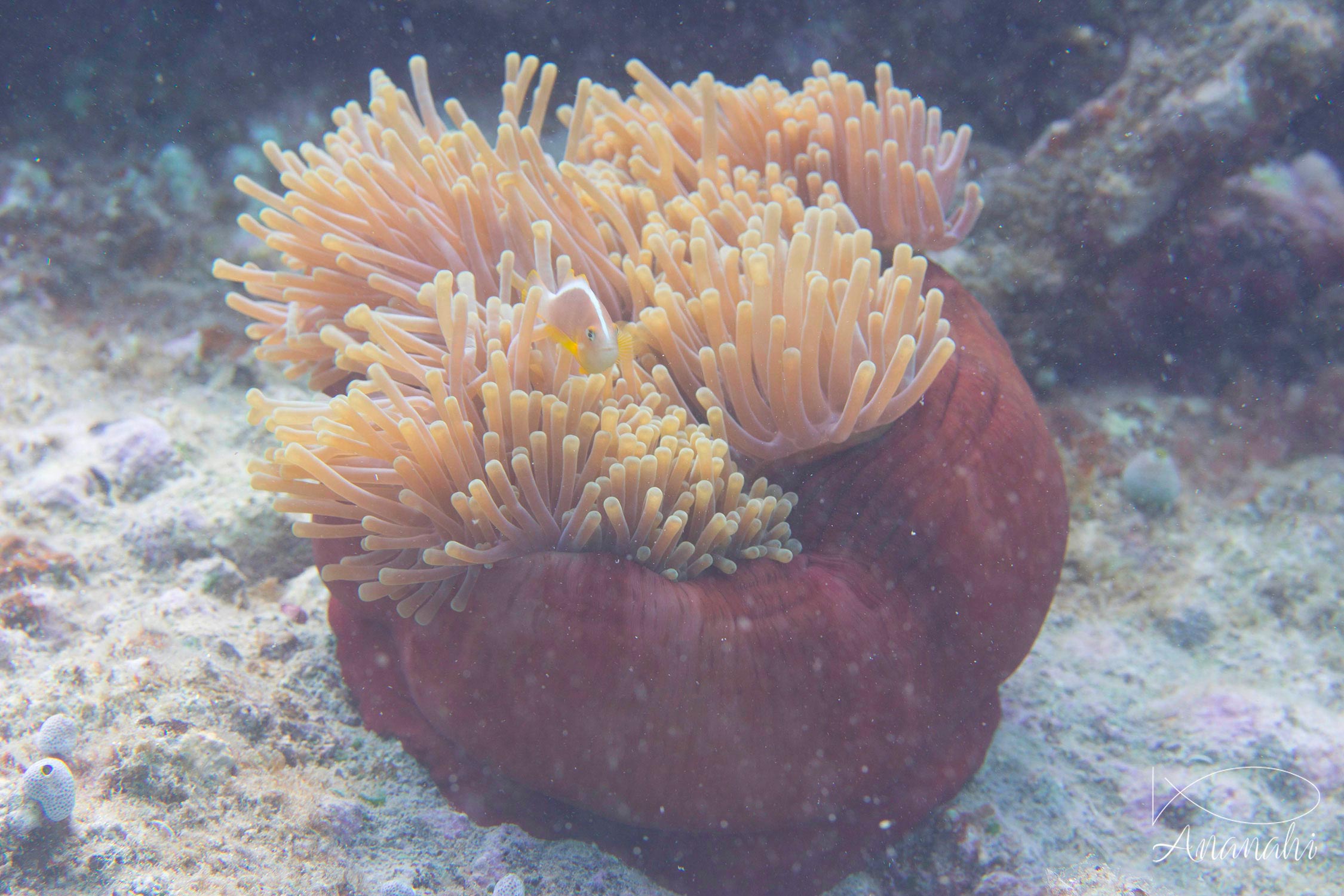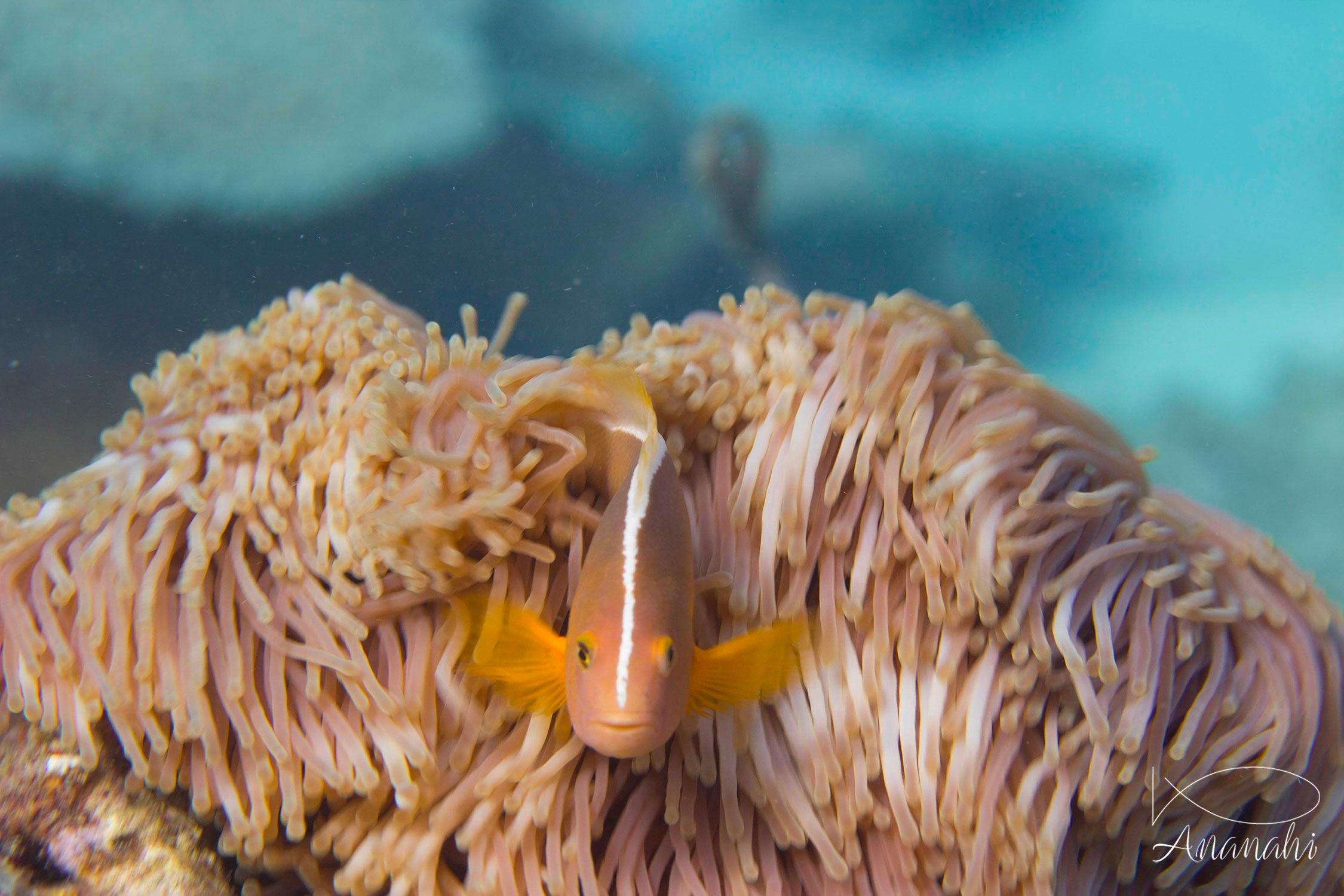
Scientific name: Amphiprion akallopisos
Size: 2.8 inches for males and 4.3 inches for females
Color: Pink and orange tint
Distinguishing feature: Dorsal color is a little darker than ventral, a slight white stripe on the back. The caudal fin is transparent
Where did we see it: Bali and Gili, Mayotte, Maldives, Raja Ampat

Scientific name: Amphiprion akallopisos
Size: 2.8 inches for males and 4.3 inches for females
Color: Pink and orange tint
Distinguishing feature: Dorsal color is a little darker than ventral, a slight white stripe on the back. The caudal fin is transparent
Where did we see it: Bali and Gili, Mayotte, Maldives, Raja Ampat
This is one of the most important clownfish on the planet, with Clarke Clownfish.
It is usually in pairs in an anemone, with several small males.
The nosetripe clownfish is omnivorous, it feeds mainly on algae but also small invertebrates.





Some sharks can stay motionless on the sand (white tips reef sharks, nurse sharks, etc.).
These sharks don't have to swim to bring oxygen to their gills like other sharks (grey, hammerheads tc.)
Parrotfish create a protective envelope around them when they are sleeping.
So, don't put the light on them during night dive to don't to wake them up and break this envelope.
We can hear the bull shark is very dangerous because of attacks near La Réunion island.
However, tens of them are living at 600 feet from the famous beach of Playa Del Carmen in Mexico. And there are no attacks.